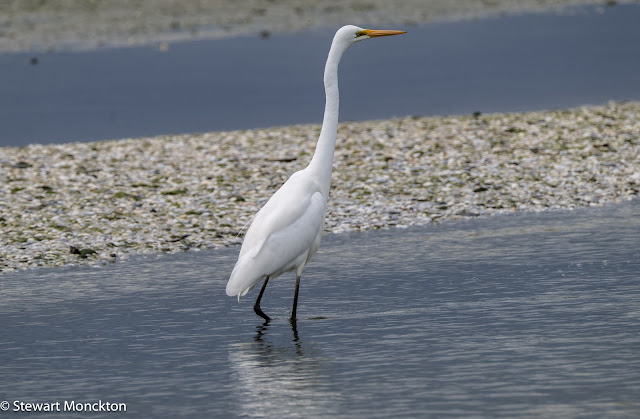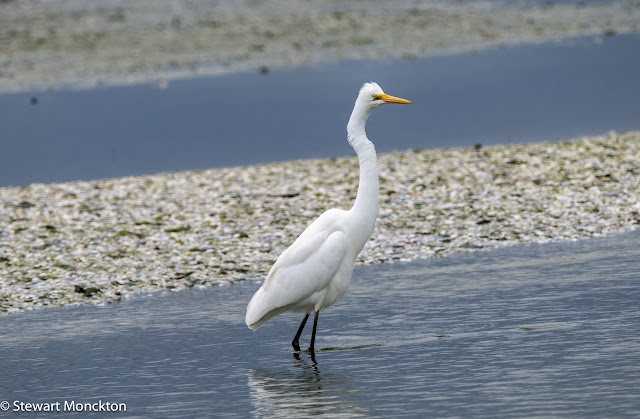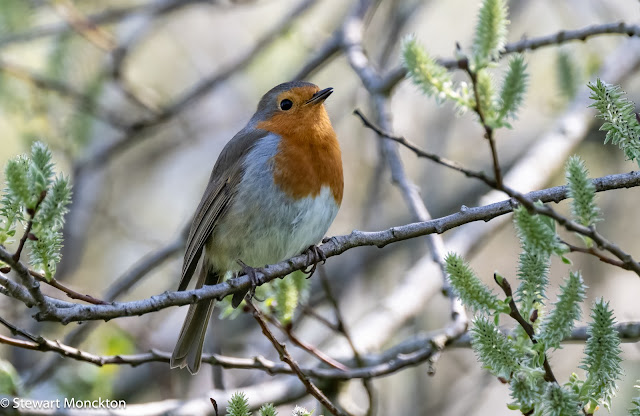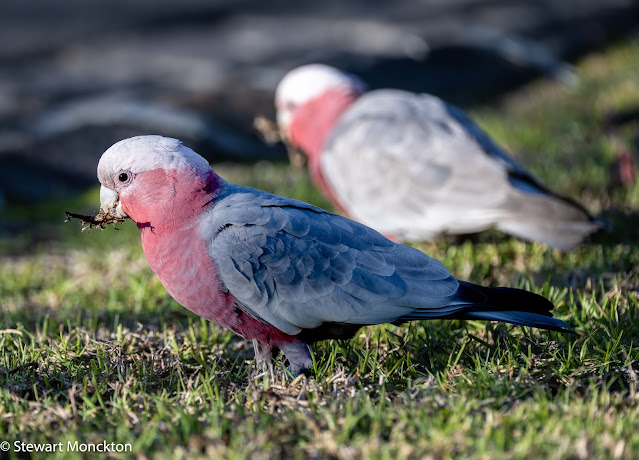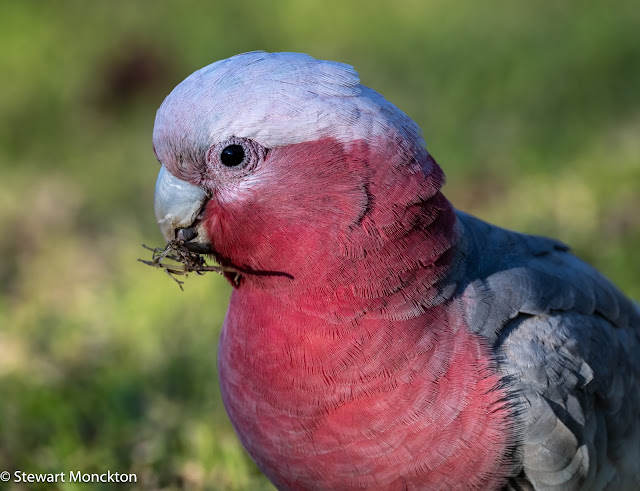The European Robin (Erithacus rubecula) must be one of the most familiar birds in the UK. Known simply as the Robin or the slightly archaic feeling 'Robin Redbreast' it was probably one of the first birds I learned to identify. It's part of the group of 'garden birds' that can be found almost everywhere, and are commonly attracted to gardens, birds feeders and parks.
The Robin is far more confiding in the UK than on mainland Europe - and you have to wonder which came first: has its confiding nature brought it closer to the domestic world, or has its long term association slowly changed its character? What ever the reason, Robins are classically the companion of garden diggers at any time of the year.
This bird was letting all the other Robins in the area know that it was ready to breed, and that they were in position of a good territory. If you look closely, you can see that there is an insect food item just a few inches from the bird.
This bird was staking its claim to a patch of willow scrub at the Ham Walls RSPB nature reserve in Somerset, UK.
If ever there was a bird that could quantify why I don't need to see rarities to have a good day, it may be this one. So utterly familiar, and yet rather wonderful.
Well, this is WBW #678 which is a good number in itself, but also means I have been posting a bird picture on a Wednesday, and hoping that others will link up, for almost exactly 13 years. Our community is much smaller than it once was, people have come and gone over those 13 years - but there are some who have been here for the whole journey. I can't thank everyone enough for the links, comments and contacts.
There may come a day when I stop doing WBW, but it is not this day!
SM




